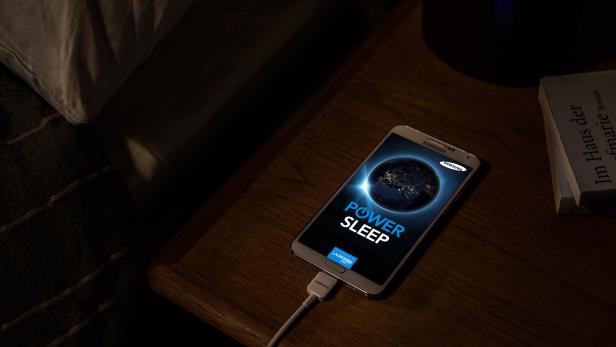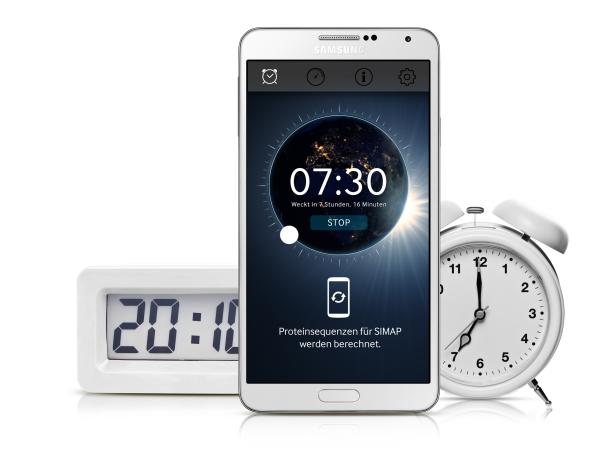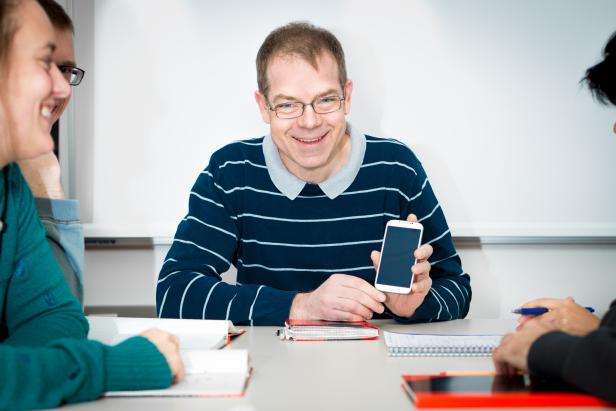
Smartphones and tablets crunching numbers for cancer research
Dieser Artikel ist älter als ein Jahr!
Roughly 80 percent of all Austrians now have a smartphone, but most don’t know that they are carrying a small supercomputer around with them. “Modern smartphones leave the three-year-old laptop that many still have at home in the dust,” said Martin Wallner, CEO of Samsung Mobile in Austria. Samsung has teamed up with the University of Vienna to sensibly leverage the processing power of smartphones when they are not being used. The Power Sleep app uses the processing power of smartphones to analyze and compare protein sequences while their users are sleeping.

© Samsung
TÜV-certified alarm clock app
Power Sleep will be available for Android smartphones and tablets starting on Thursday and works like an alarm clock app. The user can specify when the alarm should go off, and has to plug the device into a charger. The calculation process does not start until the battery is fully charged. The app downloads a data package that is just under one megabyte in size and that contains the individual protein sequences. The app then calculates them and sends the results back to the project server.
To prevent the device from overheating during the night, only one core of the processor is used at maximum capacity. Processors with four or even eight cores are now common in smartphones and tablets. According to Jürgen Falb from PocketScience, the developer of the app, the app shuts down automatically when the device reaches a temperature greater than 40 degrees Celsius. The safety was also evaluated by the German testing institute TÜV. The app only downloads new data when the device is connected to the Internet over a WIFI connection, but downloads via 3G can also be enabled.
“What makes protein research so exciting is that it is relevant in all areas from fundamental research all the way to medical research", said Thomas Rattei from the University of Vienna, who is responsible for the project. The best-known examples of this are cancer and Alzheimer’s research. “We have to know more about the functions of proteins in order to understand these illnesses.” To achieve this, certain proteins that have already been decoded in other organisms such as mice have to have the same effect in humans. “When you ask a biologist if she has compared proteins at some point, she will certainly say yes. And a very large number of these comparisons are completed every day around the world, in some cases two and three times.”

© Samsung
This requires a level of computing power that was long only available with supercomputers. In 1999, SETI@home became the first project to distribute such computational tasks among many different computers. Anyone could provide his or her computing power to science using a special program and an Internet connection. In 2002, the concept was expanded with the BOINC platform, which currently provides computing power to roughly 80 different scientific projects. Some 2.7 million people from 273 different countries have already participated in the program. There are also regular contests, and there are ranking lists of the most active users. According to Falb, such a feature is not planned, but users can see how many hours they have provided the computing power of their device to researchers.
According to Rattei, technological improvements alone are not enough to keep pace with the constantly growing databases. While Moore’s law states that the maximum computing power doubles every 18 months, the protein database nearly triples in this time. This means that more computing power is needed, and the initiative intends to provide it. A key consideration in the project is also sustainability. “We don’t want anyone to buy additional devices to participate in this project. We simply want to place an infrastructure that already exists at the disposal of another good cause.” Samsung also wants to support these efforts, and will let the smartphones and tablets that are on display in its shops work over night, for example. It is also planning an extensive marketing campaign including television commercials, outdoor advertising and online advertising.
An iOS app is not currently in development, but Rattei said that the project is open to the idea. “That would be something for the future,” Rattei said. He closely followed the desires of the community, and most of them asked for an Android app. “The development costs for the app were very high, and we would not have been able to manage them without a partner like Samsung,” said Rattei in appreciation. Samsung noted the high Android penetration in Austria, which is about 75 percent, as well as the fact that competitors are free to develop their own app for a different platform.
Kommentare